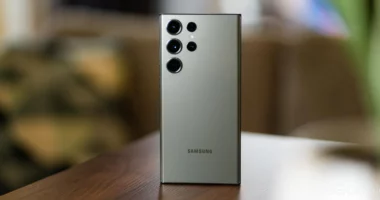During the pandemic, we witnessed a significant increase in e-commerce and a quickening of digital transformation by many organisations that had been sluggish adopters up until that point. After shops were eventually able to reopen, online ordering for anything from groceries to toilet paper to fitness equipment and home office furniture became the norm and has just lately slowed down. Clearly, e-commerce is not new. People had been able to purchase items online for decades, but once they were required to do so, they didn’t stop.
Now vs. Then: Online Purchasing and Fulfillment
People can acquire virtually anything online, including high-priced items that were previously only available in person and required extensive management and shipping expertise. Antique furniture, valuable jewels, great art, and collectibles can now be purchased online. The fulfilment of these things is evolving as a result of technology that enables a seamless end-to-end operation.
With the increased interest in digital commerce for luxury objects, it is now possible to ship, track, and insure these commodities in the same manner as standard consumer goods. For this reason, the e-commerce industry’s high-value product market is primed for exponential expansion. The next frontier for e-commerce and the area where investors should focus their attention is optimising the flow of luxury items through the supply chain and eventually into the buyer’s hands.
Already-Made Items
On the front end of making and procuring items, high-value commodities are typically not as dependent on the global supply chain as consumer goods are when it comes to production. Remember when it was practically impossible to receive a sofa in less than six months in 2021 and beyond? Couches are composed of numerous components and raw materials, each of which has its own supply chain for assembly. Fabrics, wood, and metals for the structure, as well as stuffing for the cushions.
When discussing an antique or a work of high art, this is not the case. There is no need to construct these one-of-a-kind items; they only need to be packed (properly!) and dispatched. The factory’s supply chain is not an issue because there is no factory; the item has already been manufactured.
Bypassing Shipment Issues and the Rise of End-to-End Fulfillment Services
In general, the post-sale process is also far more streamlined. The infamously scarce consumer products (such as toilet paper, baking yeast, and sofas) are typically transported by sea on container ships. Port congestion and a lack of suitable containers for delivering these goods generated a great deal of commotion from 2020 until very recently, and the situation is only just beginning to improve.
Rarely do the aforementioned high-value items (antique furniture, valuable jewellery, fine art, and collectibles) go by sea, as opposed to by land or air. They typically aren’t part of bulk orders and are shipped individually, allowing them to circumvent the shipping and transportation challenges that plague standard consumer goods. In addition, the post-sale experience for both buyers and sellers of luxury items is now simplified, simple, and user-friendly, thanks to advanced logistics software and end-to-end fulfilment services.
Luxury E-Commerce Poised for Growth
Finally, this market is expanding. The worldwide art market is on the rise, despite a dip in 2020, like every other market. The collective sales of art and antiques by dealers and auction houses increased by 29 percent from the previous year to 2021. In addition, the market for collectibles is anticipated to expand by 4% each year from 2022 to 2028.
Although the global supply chain has been featured prominently in the news over the past several years, it is something that is constantly changing, expanding and influencing the commercial economy, especially as more people continue to purchase items online. People are now aware that they can purchase toothpaste and bananas online, as well as diamonds and rare works of art. In the latter category, the e-commerce landscape will continue to expand over the next several years.
Related Articles:
Apple Satellite Messaging Feature Is Competing with Qualcomm








